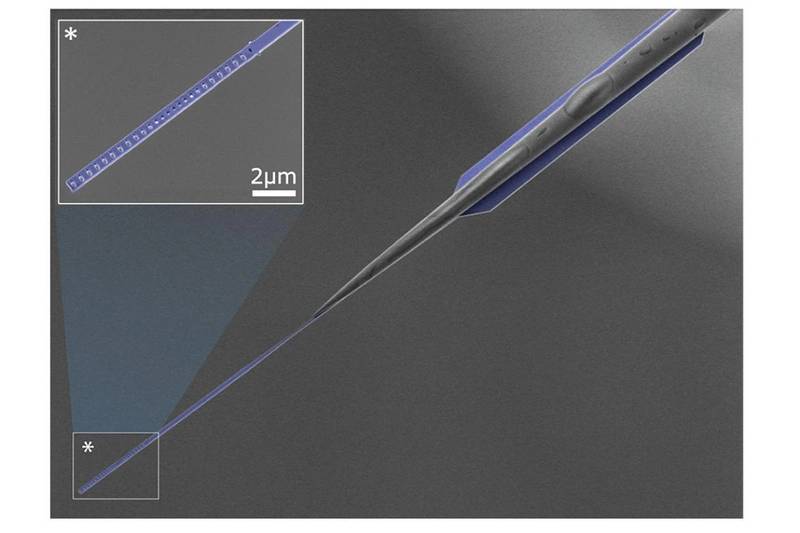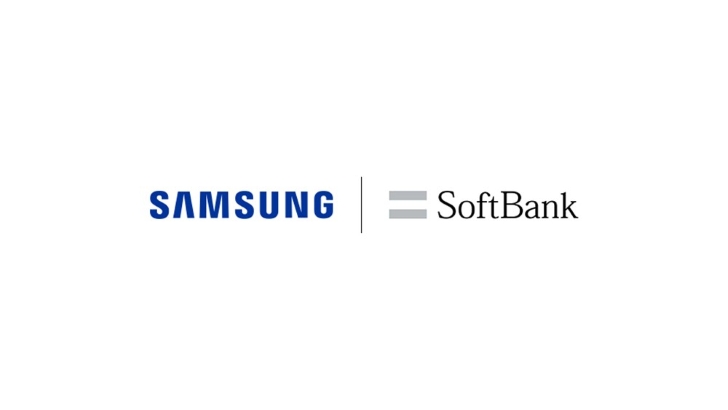Although the magnetic levitation system described in the 2015 paper allowed researchers to visually distinguish different types of cells, the differences were often too small to practically sort the cells. The setup was also static,…
Blog
-

Innovative high-voltage system in the Cayenne Electric: performance meets efficiency
The all-electric Cayenne will soon be added to Porsche’s SUV portfolio. It is based on an evolution of the Premium Platform Electric (PPE) developed in-house. Its 800-volt architecture creates the basis for impressive charging power, intelligent energy distribution and high efficiency.
In combination with the new drive system, the Cayenne Electric achieves range figures equally suitable for everyday use and long-distance journeys. The Cayenne Electric prototype has recently displayed its long-distance capability. Several independent US journalists subjected near-production but still camouflaged prototypes to a highway range test and drove more than 350 miles (563 km) on a single battery charge at a maximum permitted speed of 70 mph (113 km/h)#.
The vehicle’s range performance is the result of the combination of innovative technology and sophisticated energy management. “With the Cayenne Electric, we are taking e-performance to a new level,” explains Dr Michael Steiner, Deputy Chairman of the Executive Board and Member of the Executive Board, Research and Development. “Our innovative high-voltage system combines maximum efficiency with the driving dynamics typical of Porsche.”
Integrated HV battery: safe, compact, efficient
At the heart of the Cayenne Electric is a function-integrated high-voltage battery with a gross energy content of 113 kWh. It is directly integrated into the vehicle structure and, in addition to storing energy, also acts as an integral structural component. This results in significant advantages in weight and packaging; the ratio between cells and battery housing has improved by 12 per cent compared to the second-generation Taycan battery. Integration of the battery into the body structure also increases vehicle rigidity and further lowers the car’s centre of gravity – both essential factors for driving dynamics and precision. The battery therefore contributes to the agile handling of the Cayenne Electric. Porsche is also setting new standards in the field of passive safety; the battery modules are made of a specially developed aluminium profile that absorbs energy in a targeted manner and protects the cells in the event of an impact.
Cell chemistry and energy density: peak efficiency
For maximum energy density and charging capability, Porsche uses a lithium-ion battery with six interchangeable modules and 192 large-format pouch cells. The cells consist of a graphite-silicon anode and a nickel-manganese-cobalt-aluminium cathode (NMCA). The high nickel content of 86 per cent ensures maximum energy density, while silicon in the anode significantly enhances the fast-charging capability. Aluminium increases the rigidity of the cell structure. The result: seven per cent higher energy density compared to the current Taycan battery, while also increasing charging efficiency.
Double-sided cooling: the key to sustained performance
A key element of the high-voltage system is the innovative cooling system, which regulates the temperature of the battery from both above and below. This dual cooling allows precise control of the temperature window and ensures that the battery always operates in the optimal range – regardless of the weather, charging power or driving style. The cooling capacity corresponds to that of about 100 large household refrigerators. For the first time, energy-efficient pressure fans will be used, which consume around 15 per cent less energy than conventional suction fans. The result is a consistently high charging capacity and high performance with minimal energy loss – a key element of the overall efficiency of the new Cayenne.
Predictive thermal management: thinking ahead
The new Predictive Thermal Management is an integral part of the electrical architecture of the Cayenne Electric. It links all of the vehicle’s cooling and heating circuits, continuously analyses temperature, route and driving profile, and proactively controls the flow of energy. While driving, intelligent software calculates the heating or cooling requirements in real time – taking into account navigation data, topography, traffic conditions and driving behaviour. The aim is to keep the battery in the optimum temperature window at all times – for maximum charging speed, service life and range consistency. The advantages for the driver include shorter charging times, lower energy consumption and even more accurate range predictions. The system works closely with the further-developed Charging Planner, which takes individual charging preferences into account and preconditions the battery for the next stop while driving.
“The function-integrated battery, the double-sided cooling concept and the predictive thermal management demonstrate how we think comprehensively about technology,” says Dr Michael Steiner. “Our aim is to provide electric mobility in a way that befits Porsche – efficient, powerful and engaging at the same time.”
Robust fast-charging behaviour: next-level usability
The Cayenne Electric sets new standards in charging performance. Its capacity of up to 400 kW at suitable high-power charging stations enables charging from 10 to 80 per cent in less than 16 minutes. The Cayenne Electric maintains this high level of charging power over an exceptionally wide state of charge band. Up to about 50 per cent SoC, the charging rate consistently remains between 350 and 400 kW – a clear benefit for long-distance driving^.
This optimal fast-charging curve is achievable from a battery temperature of just 15 degrees Celsius, which is significantly lower than before. This means that the car’s charging performance is particularly robust under real-world conditions throughout the year. In addition, the 800-volt architecture combined with the high-voltage switch in the battery also enables efficient charging at 400-volt stations at up to 200 kW – without an additional booster.
Porsche Wireless Charging: cable-free convenience
From 2026, Porsche expects that it will offer the new Porsche Wireless Charging system – an 11 kW wireless charging system with a compact one-box floor plate – for the first time with the Cayenne Electric to select markets, although AUstralia is yet to be confirmed. This contactless charging technology achieves a similar efficiency to wired AC charging: up to 90 per cent. When parked over it, the vehicle automatically detects the floor plate and lowers itself slightly for charging. The inductive charging process takes place across a gap of a few centimetres. The entire process is fully automatic, safe and maintenance-free. The My Porsche app can be used to monitor charging processes, define time slots or authenticate several vehicles. With this technology, Porsche is once again emphasising that efficiency and convenience go hand in hand – even when charging.
Info
#
https://www.motortrend.com/reviews/2026-porsche-electric-cayenne-range-test
https://insideevs.com/reviews/775777/porsche-cayenne-electric-range-test/
https://youtu.be/Yz1qZ1vF2XM?si=v13gL6u1vjDK7hIt
https://youtu.be/IwrYwFPn0pc?si=bbqapldDeNATyNJ2Actual range you experience will vary depending on a number of factors such as speed, traffic and weather conditions, driving habits, elevation change, how much weight the vehicle is carrying, use of vehicle features/accessories such as heating or air-conditioning, and wheels/tyres among others. Please contact an Official Porsche Centre for information regarding Australian delivered models.
^ Charging times are based on rates observed during Porsche AG testing on a test vehicle in
controlled test conditions using a high speed DC charger for vehicle comparison purposes only. The rates of charge you experience will differ depending on a number of factors such as the ambient conditions, battery size, the amount of charge the battery has and the type of charger. Public DC chargers are typically faster than AC chargers installed at residential premises. We recommend charging to 80 per cent to assist in maximising your vehicle’s battery range and battery life over time.Press releases may contain forward-looking statements and information on the currently expected business development of Porsche AG. These statements are subject to risks and uncertainties. They are based on assumptions about the development of economic, political and legal conditions in individual countries, economic regions and markets, in particular for the automotive industry, which we have made based on the information available to us and which we consider to be realistic at the time of publication. If any of these or other risks materialise, or if the assumptions underlying these statements prove incorrect, the actual results could be significantly different from those expressed or implied by such statements. Forward-looking statements in this presentation are based solely on the information pertaining on the day of publication. These forward-looking statements will not be updated
later. Such statements are valid on the day of publication and may be overtaken by later events. This information does not constitute an offer to exchange or sell or offer to exchange or purchase securities.
“Enter Electric!“
The Volkswagen Group invites you to find out much more about electromobility with a cross-brand communication campaign. You can find more information about electromobility at Porsche on this Newsroom microsite.
Continue Reading
-

Microscopic Wave Machine Mimics Ocean Waves
Researchers from Australia’s University of Queensland have made a microscopic “ocean” on a silicon chip to miniaturise the study of wave dynamics.
The device, made at UQ’s School of Mathematics and Physics, uses a layer of…
Continue Reading
-

Samsung Electronics and SoftBank Corp. To Collaborate on AI-RAN Technologies for Next-Generation Telecommunications – Samsung Global Newsroom
Samsung Electronics and SoftBank Corp. have signed a Memorandum of Understanding (MOU) for joint research into next-generation communications technologies, including 6G and AI-based radio access network (AI-RAN) innovations.
The two companies will categorize next-generation communications technologies into four candidate areas — 6G, AI for RAN, AI and RAN, and Large Telecom Model (LTM) — and collaborate on select fields to drive future innovation. Leveraging their advanced technological expertise and network deployment capabilities, they plan to identify new use cases, jointly develop core technologies and demonstrate the technologies’ effectiveness.
This year marks a significant push toward 6G standardization, with discussions emerging on new frequency bands such as the 7GHz spectrum. Under the “AI for RAN” concept, AI-RAN technologies are expected to play a pivotal role in optimizing wireless networks.
Moreover, AI-RAN orchestration technologies under the “AI and RAN” concept — designed to seamlessly integrate AI workloads with base station workloads and operate them efficiently — hold significant potential for network optimization and enhanced user experiences. The use of Generative AI within communications networks is being considered a viable area of research as well.
“Through this collaboration with SoftBank, we aim to define meaningful use cases for both operators and end users, while securing key technologies for future commercialization,” said JinGuk Jeong, Executive Vice President and Head of Advanced Communications Research Center (ACRC) at Samsung Research. “Building on our advanced expertise in AI-RAN and 6G, Samsung will continue to lead innovation in next-generation communications.”
“We are very pleased to collaborate with Samsung, a global leader in communications technologies. By combining our advanced expertise, we will accelerate the realization of next-generation networks that evolve to become more efficient and highly reliable through AI-RAN,” said Hideyuki Tsukuda, Executive Vice President and CTO, SoftBank Corp. “SoftBank remains committed to taking on the challenge of building the next-generation social infrastructure essential for a future society where AI and humans coexist.”
Samsung Electronics continues to lead research in 6G and AI-powered communications technologies through its ACRC under Samsung Research. In November, the company plans to host the Silicon Valley Future Wireless Summit, an event aimed at fostering dialogue among industry leaders, academia and government organizations on AI-RAN research.
Continue Reading
-

Nikkei 225, CSI 300, Hang Seng Index
A HDR evening shot taken at sunset of the Tokyo skyline.
Fgm | E+ | Getty Images
Asia-Pacific markets rose Friday, after the White House said that U.S. President Donald Trump and China’s President Xi Jinping were set to hold talks next week.
U.S. Press Secretary Karoline Leavitt said Trump will leave for Malaysia late Friday and then travel to Japan and South Korea, meeting Xi next Thursday after speaking at the Asia-Pacific Economic Cooperation CEO Summit, Reuters reported.
Japan’s benchmark Nikkei 225 index climbed 0.78%, while the Topix added 0.39%. Japan’s core inflation rate accelerated to 2.9% in September, the first increase since May and in line with expectations from economists polled by Reuters.
This was higher than the 2.7% seen in August. The core inflation metric in Japan strips out the prices of fresh food but includes energy costs.
Headline inflation in Japan also climbed to 2.9% from 2.7% the previous month.
South Korea’s Kospi jumped 1.35% and the small-cap Kosdaq was 0.92% higher.
Australia’s ASX/S&P 200 was trading 0.19% higher on open.
Futures of Hong Kong’s Hang Seng Index pointed to a stronger open, trading at 26,139 against the index’s previous close of 25,967.98.
Overnight, the three major averages closed higher. The S&P 500 climbed 0.58% to close at 6,738.44, boosted by tech stocks, after a batch of strong earnings results.
The Dow Jones Industrial Average traded up 144.20 points, or 0.31%, to finish at 46,734.61. The Nasdaq Composite outperformed, rising 0.89% to settle at 22,941.80, seeing support from the gains in Nvidia, Broadcom and Amazon. A nearly 3% jump in shares of fellow artificial intelligence player Oracle also boosted sentiment.
— CNBC’s Sean Conlon, Pia Singh and Lim Hui Jie contributed to this report.
Continue Reading
-

Swarovski Celebrates 130 Years of Joy with Signature Erewhon Bag and Juice
LOS ANGELES, Oct. 23, 2025 /PRNewswire/ — Swarovski is bringing its signature joyful extravagance to the world of wellbeing via an exclusive collaboration with Erewhon, the certified B-Corp and Organic Retailer in Los…
Continue Reading
-
A new playbook for venture capital in Africa
The mismatch is hard to ignore: Africa accounts for 18% of the global population and 5% of GDP, yet attracted just 0.6% of global venture capital (VC) in 2024. While funding rose from $1.4 billion in 2019 to a peak of $4.6 billion in 2022, it fell sharply to $1.5 billion last year.
Over the same period, the number of active VC investors dropped from more than 1,000 to just over 500, and only 188 startups raised capital in 2024, compared to 353 at the peak in 2022 and a base of 117 in 2019.
This is not just a cyclical slowdown; it reflects deeper structural constraints in how capital is accessed, allocated, and scaled across the continent. It invites a rethink of the role of venture capital in Africa — a sector that holds the potential to catalyse transformative change, but only if it evolves to meet African realities.
We have highlighted four key areas to consider:
1. VCs will need to have boots-on-the-ground experience
Global models often assume mature infrastructure and high consumer liquidity and, in return, demand a “grow-at-all-costs” trajectory. Yet these conditions are not consistently present across African markets.
As an example, the African Development Bank estimates the continent’s annual financing gap for structural transformation at more than $400 billion. These gaps require a rethinking of how capital is deployed — with strategies rooted in sustainable growth, contextual insight, and business resilience that enable startups to thrive amid real-world constraints.
The role of VCs with Africa experience, grounded in the lived realities of the markets they serve, becomes indispensable.
2. African startups build ecosystems, not just products
A critical mindset shift is recognising that in Africa, startups are not just building products — they are building ecosystems. By addressing consumer needs, they also fill infrastructure gaps.
In this context, the role of venture capital is not just to fund innovation, but to support the systems that innovation depends on. This makes African VCs patient ecosystem builders; this is especially true in foundational sectors with deep structural barriers like fintech, logistics, and energy, which together accounted for 80% of Africa’s VC funding in 2024.
3. Diversification is needed as VC is underpenetrated and too concentrated
Yet even as startups take on the work of building ecosystems, a critical structural gap persists: the capital needed to scale them remains out of reach for many. While seed funding has grown in recent years, follow-on capital — from Series A onwards — remains scarce.
The data illustrates this imbalance: in 2024, the top ten investments accounted for 51% of total deal value, and just 28 startups absorbed nearly half of all VC funding on the continent between 2019 and 2024.
Geographically, 84% of 2024’s VC funding went to only four countries: Nigeria, Kenya, South Africa, and Egypt. Without more sustained growth-stage financing and long-term commitment, many ventures that have proven viable and impactful risk stalling before they scale — or even worse, failing due to a lack of financing.
4. More funding is needed, and it can and must come from the continent
But allocation is only part of the equation. Africa must mobilise its domestic capital base to align with the specific needs of the continent.
The Africa Finance Corporation recently noted that an estimated $4 trillion is held by domestic institutions such as pension funds — capital that could be redirected toward critical infrastructure and enterprise development. Ghana’s new policy mandating that 5% of pension fund assets be allocated to venture capital and private equity, amounting to approximately $300 million annually, offers a concrete example of how local capital can play a catalytic role.
Projections show Africa’s population will grow from around 1.5 billion today to approximately 3.8 billion by 2100, representing nearly 40% of the world’s population. The choices made today about how we fund, scale, and support innovation on the continent will shape not just Africa’s future, but the future of global markets, labour forces, and growth trajectories.
We just cannot afford for venture capital in Africa to be an afterthought given its crucial role in the private sector.
Continue Reading
-

‘Joni Mitchell is wild. She’ll drink you under the table’
Mark SavageMusic correspondent
 Getty Images
Getty ImagesCarlile was a key part of Joni Mitchell’s rehabilitation, sitting with her as she relearned the lyrics to her songs after a brain haemorrhage When Brandi Carlile was 12 years old, living in a mobile home…
Continue Reading
-

25 True Crime TV Show Adaptations Ranked by Tomatometer (Murdaugh: Death in the Family)
TAGGED AS: binge, Binge Guide, streaming, TV
The latest: Murdaugh: Death in the Family is now streaming on Hulu.
Television has emerged as the definitive home for true crime adaptations, where real-life events…
Continue Reading
-
Hyundai Motor Hosts 15th World Skill Olympics, Pitting Technicians Against Real-World Repair Challenges
- The global skills competition for Hyundai Motor Company’s top technicians has been held biannually since 1995
- 75 participants from 50 countries from around the world, gathered at the Global Learning Center in Cheonan, Korea from October 20–23
- Technicians were evaluated through written and practical tests in three categories: internal combustion engine vehicles, electric vehicles and commercial vehicles
SEOUL, October 23, 2025 – Hyundai Motor Company hosted the 15th World Skill Olympics from October 20 to 23 at the Global Learning Center (GLC) in Cheonan, South Korea, bringing together technicians from around the world to demonstrate their skills in a structured competition.The company’s World Skill Olympics, began in 1995, takes place every two years. It serves as a platform for Hyundai Motor technicians worldwide to demonstrate their skills and exchange technical knowledge.
This year’s competition featured 75 outstanding technicians from 50 countries, who earned their spots through regional qualifiers. Participants included representatives from regions, such as Europe, the Middle East, Latin America and Southeast Asia.
Hyundai Motor conducted evaluations in three categories: internal combustion engine vehicles, electric vehicles, and commercial vehicles.
Notably, beginning with the last competition, Hyundai Motor introduced virtual reality (VR) assessments, enabling the safe evaluation of challenging, high-risk maintenance tasks in realistic environments. The company plans to actively use the evaluation data gathered from this competition for future technician training programs.
On the final day, Hyundai Motor hosted an awards ceremony to honor the top performers in each category. The top three participants from each discipline received gold, silver and bronze trophies, along with cash prizes.
The overall winner of the competition, Mr. Dovydas Cole from the United States, achieved the highest score among all participants.
In addition, this year’s awards ceremony featured a congratulatory video message from José Muñoz, President and CEO of Hyundai Motor Company, marking the successful conclusion of the 15th World Skill Olympics and recognizing the efforts of all the participating technicians.
Going forward, Hyundai Motor plans to encourage the growth of regional competitions to further enhance the technical skills of its global technicians and foster pride among its workforces.
###
About Hyundai Motor Company
Established in 1967, Hyundai Motor Company is present in over 200 countries with more than 120,000 employees dedicated to tackling real-world mobility challenges around the globe. Based on the brand vision ‘Progress for Humanity,’ Hyundai Motor is accelerating its transformation into a Smart Mobility Solution Provider. The company invests in advanced technologies such as robotics and Advanced Air Mobility (AAM) to bring about revolutionary mobility solutions while pursuing open innovation to introduce future mobility services. In pursuit of a sustainable future for the world, Hyundai will continue its efforts to introduce zero-emission vehicles with industry-leading hydrogen fuel cell and EV technologies.More information about Hyundai Motor and its products can be found at: https://www.hyundai.com/worldwide/en/ or Newsroom: Media Hub by Hyundai
Follow our Hyundai Global Newsroom Instagram channel @hyundai_mediahub
Jihyun Park
Global PR Team / Hyundai Motor Company
pjh85@hyundai.com
Continue Reading
